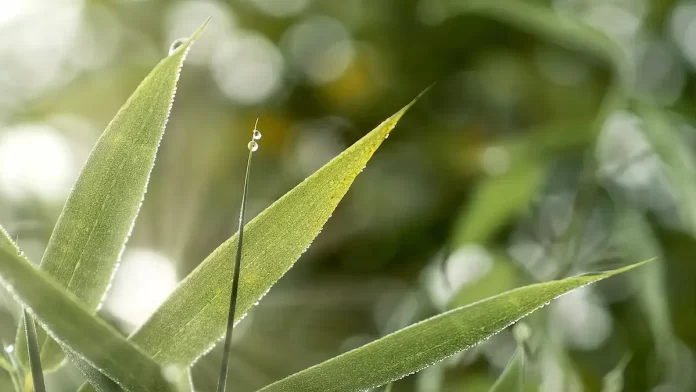Every morning, a breathtaking transformation unfolds across the landscape. Blades of grass, leaves, and even solid surfaces like car roofs emerge adorned with tiny droplets of water, sparkling like scattered diamonds under the nascent sun.
This ethereal phenomenon, known as dew, is a testament to the fascinating interplay of temperature, pressure, and the ever-present dance of water molecules. Today, we delve into the intricate mechanism of dew formation, demystifying the magic behind these glistening tears of the dawn.
The Stage is Set: Understanding Humidity and Condensation
The story of dew begins with humidity, the amount of water vapor present in the air. Warm air can hold more water vapor than cold air. As the temperature drops, the air’s capacity to hold water vapor also decreases.
This sets the stage for condensation, the process by which water vapor transforms into liquid water droplets. Imagine a crowded theater – when the temperature rises, more people can squeeze in.
But as it gets colder, some have to leave, finding space on chairs or even spilling out altogether. Similarly, when air cools, excess water vapor condenses, forming tiny droplets.
Enter the Dew Point: The Crucial Threshold
Not every drop in temperature leads to dew formation. The key player here is the dew point, the temperature at which the air becomes saturated with water vapor and any further cooling results in condensation.
Think of it as the point where the theater is completely full, and any additional “people” (water vapor) have to condense and find space outside (as droplets). The dew point varies depending on the amount of water vapor in the air.
On humid nights, the dew point is closer to the air temperature, making dew formation more likely.
The Cooling Act: Radiative Heat Loss and Surface Temperature
Now, how does the air cool down enough to reach the dew point and trigger condensation? The answer lies in radiative heat loss.
During the night, especially in clear skies, surfaces lose heat to the colder outer space through infrared radiation. This heat loss causes the temperature of objects, including grass, leaves, and even rooftops, to drop significantly.
Grand Finale: Dewdrop Debut on the Cooler Stage
As the surface temperature dips below the dew point, the surrounding air, now holding more water vapor than it can handle at the cooler temperature, condenses on the colder surface.
These tiny water droplets, clinging to blades of grass, leaves, and other surfaces, are what we call dew. The amount of dew formed depends on various factors, including the rate of temperature drop, humidity levels, and the surface’s thermal properties (materials that lose heat faster tend to form more dew).
Beyond the Glistening Drops: The Significance of Dew
Dew may seem like a fleeting beauty, but its role in the natural world is far from insignificant. In arid regions, dew provides vital moisture for plants, especially during dry periods.
It contributes to the overall water balance of ecosystems and even influences local weather patterns. For farmers, dew can be a welcome supplement to rainfall, particularly for crops grown in areas with limited precipitation.
Unveiling the Mysteries: Observing and Predicting Dew Formation
Observing dew formation can be a delightful experience. Look for clear nights with low wind speeds, as these conditions favor radiative heat loss and dew formation.
Metal surfaces, which cool faster, often exhibit heavier dewfall compared to rougher surfaces like soil. Predicting dew formation is crucial for farmers and weather forecasters.
Instruments like hygrometers measure humidity, while infrared thermometers can help determine surface temperatures, providing valuable insights into the likelihood of dewfall.
The Science of Dew: A Story of Intertwined Elements
From the invisible dance of water molecules to the interplay of temperature and pressure, the formation of dew is a captivating example of the interconnectedness of nature’s forces.
It’s a reminder that even the simplest phenomena, like the glistening tears of dawn, hold within them stories of scientific wonder and ecological significance.
So, the next time you witness the magic of dew, take a moment to appreciate the intricate dance of physics and chemistry that unfolds right before your eyes, painting the world with a touch of ephemeral beauty.
